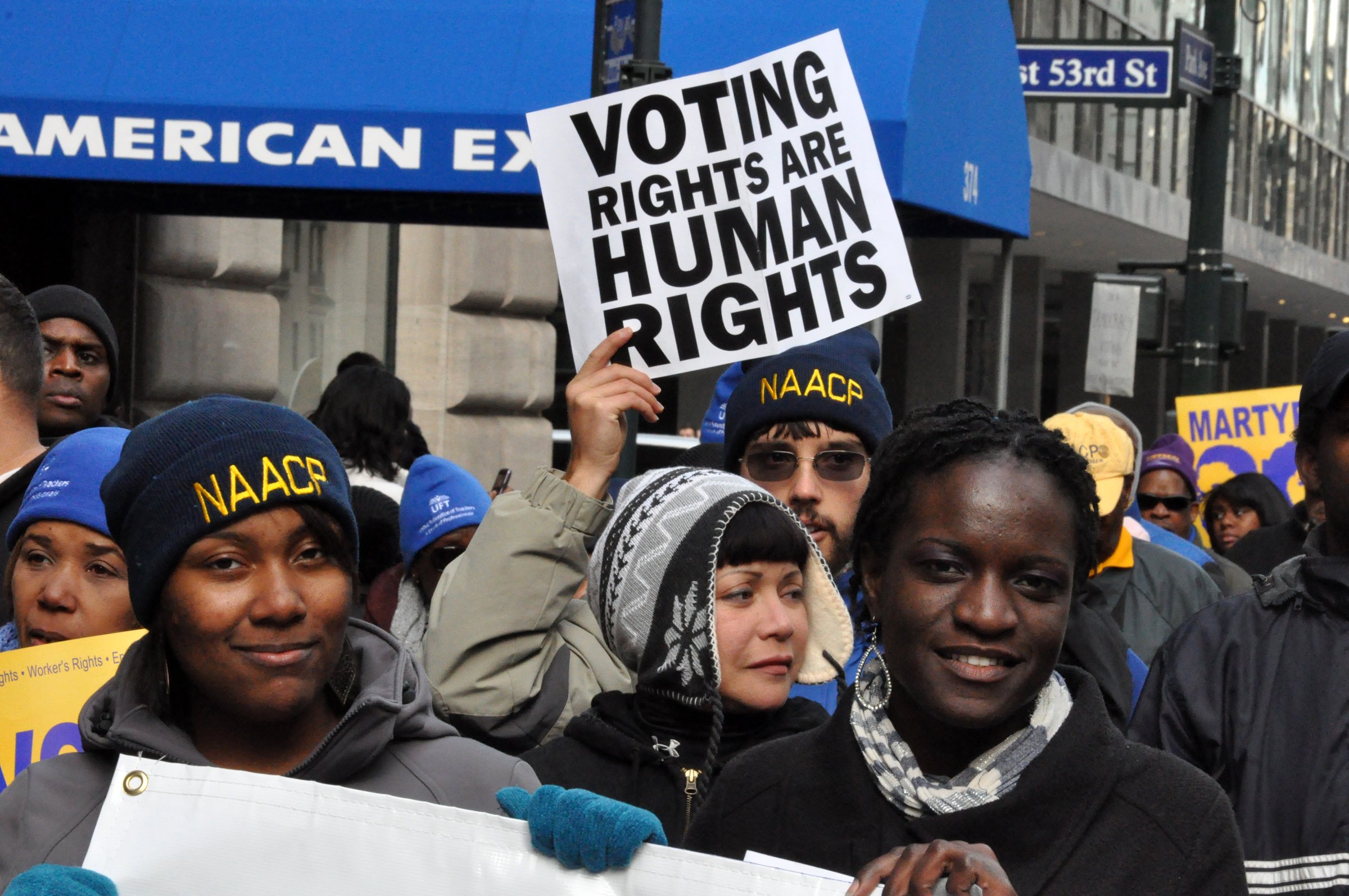Who Gets to Vote? Teaching About the Struggle for Voting Rights in the United States
By Ursula Wolfe-Rocca
Thousands marched in midtown Manhattan on December 10, 2011, to defend voting rights. By Michael Fleshman.
The struggle for the ballot is emblematic of the struggle to make real the democratic promises of this country’s founding narrative. Just as the United States has never been a true “government by the people, for the people,” the right to vote has always been incomplete, contested, and compromised by the racism, sexism, classism, and xenophobia of policymakers and the interests they act to protect.
In a moment of renewed and insidious voter suppression, examining the history of voting rights also presents an opportunity to challenge the deeply entrenched fable of the steady forward progress of U.S. history. Voting rights have expanded in the last 400 years, but they have also been taken away, requiring activists to rise up, again and again, to restore the achievements of prior generations. The fight for the ballot is ongoing.
Source: GPA Photo Archive
Recent elections have brought forth the old problem of voter suppression in a new guise — voter ID laws, voter roll purges, polling places shuttered. As activists combat these restrictive, antidemocratic measures, it is vital that we provide students historical context for their efforts, which is why the Zinn Education Project has put together a cluster of lessons on the history of voting rights in the United States. These lessons can be taught individually, but they are presented here as a progression.
The first lesson considers the question of who should vote. Students first share their understanding of what makes a “qualified” voter, then reconsider their thinking after a close reading of an oral history by Fannie Lou Hamer.
The second lesson asks students to predict how policymakers might have restricted the right to vote for certain groups to thwart movements and laws that expanded voting rights.
The final lesson is a mixer role play in which students learn about a variety of people with firsthand experience having their voting rights granted or denied. The roles reach back as far as the colonial era and forward to the present. This lesson closes with a timeline activity in which students create a visual map depicting the expansion and contraction of voting rights over time.
SMU Dedman School of Law professor Grant M. Hayden has written:
The history of voting in the United States has not been characterized by a smooth and inexorable progress toward universal political participation. It has instead been much messier, littered with periods of both expansion and retraction of the franchise with respect to many groups of potential voters.
Young people need to know this “messier” history; it is a history that calls us to action, a history that conveys that voting rights are not definitively won, but must be struggled for and defended.

